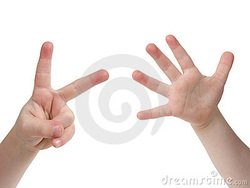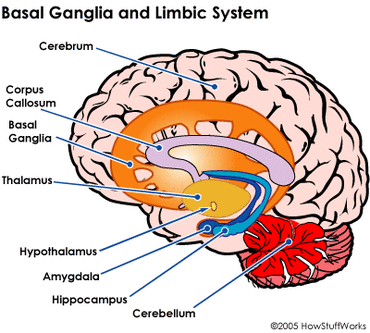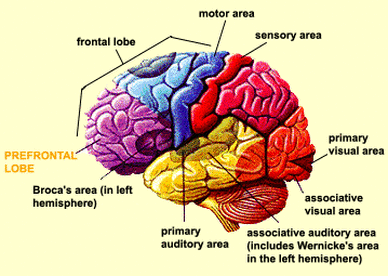How do we remember?
Our memory is like a computer’s information-processing system. First, it translates information (keystrokes) into an electronic language, just as the brain changes sensory information into a neural language. There are three different parts to remembering; Encoding which is getting the information into our brain, Storage, retaining that information, and Retrieval which is the ability to recall it later and get it back out to "present" time so we can talk about it. Richard Shiffrin decided upon a classic three stage processing model of memory in 1968. He claims that we register fleeting sensory memories. Some are processed into on-screen short-term memories, while a tiny fraction of them are encoded for long-term memory and possibly retrieval. Working memory is that we register some information automatically, bypassing the encoding and storage stages. (traumatic events, etc) click here to see more
Short term v. Long term memories
Short term memory:
Also called Working memory, this is limited in duration and capacity. George Miller (1956) had and idea about the Magical Number Seven, plus or minus two. The short term memory stores only about 7 or so bits of information (7 wonders of the world, the seven seas, the seven deadly sins, the seven primary colors, the seven musical scale notes, the seven days of the week, seven magical sevens, seven digits in phone numbers,etc). It causes certain regions of the brain to become very active, mainly the pre-frontal lobe.
Long Term Memory:
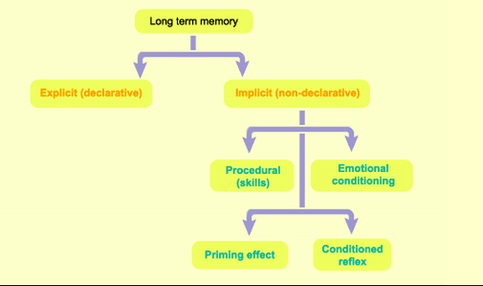
This has an infinite capacity for storing memory. The long term memories are stored based on Synaptic Change, long-term potentiation (LTP). Two different types of long term memory is implicit (non-declarative) memory and explicit (declarative) memory. Implicit memory consist of learning how to do something which is also known as procedural memory and is controlled by the amygdala. They are expressed by means other than words. For example, when you ride a bike, use a computer, or simply tie your shoelaces, you are expressing memories of motor skills that do not require the use of language. Such "motor memories" are just one type of implicit memory. There are many other types of implicit memories as well along with procedural memory including emotional conditioning, the priming effect, and conditioned reflex. Procedural memory does not apply the hippocampus instead, procedural memory appears to be associated with changes in the cerebellum, basal ganglia, and the motor cortex, all of which are involved in motor control. Explicit (declarative) memory is your memory of all things you are aware of remembering and can describe in words and is controlled by the hippocampus. This includes your memory for facts or events such as your birthday, the meaning of a specific word, or even what you eat at your last meal. This form of memory is also called explicit memory, because you can name and describe each of these remembered things explicitly.
Where are memories made?
The Basal Ganglia
The basal ganglia, in specific the dorsal striatum is the main location where all the information is stored in the brain. There is Automatic processing which is information about space, time, and frequency as well as Effortful Processing, which produces memories that we can access with ease. The Effortful Processing boosts memory through repetition. The spacing effect is the effect of information that can be "heard" during sleep that is registered by the ears but not remembered by the person.
The Hippocampus
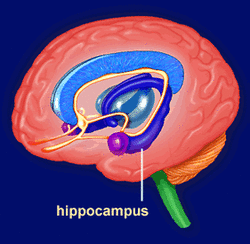
Information is moved from short term to long term through the Hippocampus. All of the information decoded in the sensory areas go into the hippocampus, which sends them back to where they came from. The hippocampus can be thought of in a way as a mail room where everything is sorted and new sensations are compared with previously recorded ones. It is also known to create associations among an object's different properties and determine the dangerousness of an object or situation. It supports the explicit memory which is all of the things you are aware of remembering and can describe in words. The hippocampus is also especially sensitive to the encoding of the context associated with a harsh or unforgettable experience in a bad day. It is because of the hippocampus that a stimulus become a source of conditioned fear, but also so all the objects surrounding it and the situation or location in which it occurs becomes to stimulus as well.
The Cerebellum
Although the hippocampus is a temporary processing site for explicit memories, you could lose it and still lay down memories for skills and conditioned associations. Implicit memories require fewer connections among cortical storage areas (an area in the brain), so people with damage to their hippocampus may retain those unforgettable memories. The cerebellum, the region of the brain extending out form the rear of the brainstem, plays an important role in forming and storing the implicit memories created by classical conditioning. Humans with a damaged cerebellum are incapable of developing certain conditioned reflexes. Implicit memory formation requires the cerebellum.
Emotionally charged memories
The parallel functioning of our explicit and implicit memory systems explains why we do not remember traumas experienced very early in our lives. At that age, the hippocampus is still not fully developed, while the amygdala (another part of our brain) is already capable of recording unconscious memories. Early childhood traumas can disturb the mental and behavioral functions of adults by behavioral that they cannot access consciously. When one experiences trauma, the implicit memory system of the amygdala and the explicit memory system of the hippocampus record different aspects of the event. Later on, your hippocampus will enable you to remember such things as where the event happened, when it happened, and whom you were with at the time. Meanwhile, as your amygdala is activated, your muscles will tighten, your blood pressure will rise, your stomach will get tied up in knots, and so on.
Specific states or emotions can force us to recall events associated with those states or emotions. While in a good mood, we tend to retrieve memories consistent with that mood. These memories help sustain the current mood. When depressed, we more easily recall negative memories. Moods also prime us to interpret others' behaviors in ways consistent with our emotions.
Specific states or emotions can force us to recall events associated with those states or emotions. While in a good mood, we tend to retrieve memories consistent with that mood. These memories help sustain the current mood. When depressed, we more easily recall negative memories. Moods also prime us to interpret others' behaviors in ways consistent with our emotions.
Flashbulb memories!
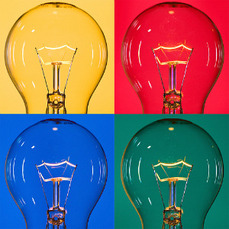
A Flashbulb memory is attached to emotionally significant moments or events; these differ from most other memories in terms of their striking clarity and jump right to the long term memory. However, these are not always fully accurate; they often become skewed after time. We are more likely to remember if the memories are “biologically significant” (Robert Livingstone). If a unique event has great meaning — for example, if it accompanies great pain, joy, fear, or some other strong emotion then it goes into permanent memory. Beryl Benderly describes "flashbulb" memories as "It's as if our nervous system takes a multimedia snapshot of the sounds, sights, smells, weather, emotional climate, even the body postures we experience at certain moments."
Factors Effecting Memory Retention
1) Degree of Attentiveness - Attentiveness is used in engraving information into memory. Thus, attention deficits can radically reduce memory performance. You can improve your memory capacity by making a conscious effort to repeat and integrate information.
2) Strength of motivation - It is easier to learn when the subject fascinates you. Thus, motivation is a factor that enhances memory. Some young people who do not always do very well at the subjects they are forced to take in school often have a phenomenal memory for statistics about their favorite sports or other subjects separate from school.
3) Affective values associated with the material to be memorized, and the individual’s mood and intensity of emotion - Your emotional state when an event occurs can greatly influence your memory of it. Thus, if an event is very upsetting, you will form an especially vivid memory of it. For example, many people remember where they were when they learned about President Kennedy’s assassination, or about the attacks of September 11, 2001. The processing of emotionally charged events in memory involves norepinephrine, a neurotransmitter that is released in larger amounts when we are excited or tense. As Voltaire put it, that which touches the heart is engraved in the memory.
4) Location, light, sounds, smells...in short, the entire context in which the memorizing takes place is recorded along with the information being memorizes. - Our memory systems are contextual. Due to this, when you have trouble remembering a particular fact, you may be able to retrieve it by recollecting where you learned it or the book from which you learned it. Was there a picture on that page? Was the information toward the top of the page, or the bottom? Such items are called “recall indexes”. And because you always memorize the context along with the information that you are learning, by recalling this context you can very often, by a series of associations, recall the information itself.
(from link in works cited)
2) Strength of motivation - It is easier to learn when the subject fascinates you. Thus, motivation is a factor that enhances memory. Some young people who do not always do very well at the subjects they are forced to take in school often have a phenomenal memory for statistics about their favorite sports or other subjects separate from school.
3) Affective values associated with the material to be memorized, and the individual’s mood and intensity of emotion - Your emotional state when an event occurs can greatly influence your memory of it. Thus, if an event is very upsetting, you will form an especially vivid memory of it. For example, many people remember where they were when they learned about President Kennedy’s assassination, or about the attacks of September 11, 2001. The processing of emotionally charged events in memory involves norepinephrine, a neurotransmitter that is released in larger amounts when we are excited or tense. As Voltaire put it, that which touches the heart is engraved in the memory.
4) Location, light, sounds, smells...in short, the entire context in which the memorizing takes place is recorded along with the information being memorizes. - Our memory systems are contextual. Due to this, when you have trouble remembering a particular fact, you may be able to retrieve it by recollecting where you learned it or the book from which you learned it. Was there a picture on that page? Was the information toward the top of the page, or the bottom? Such items are called “recall indexes”. And because you always memorize the context along with the information that you are learning, by recalling this context you can very often, by a series of associations, recall the information itself.
(from link in works cited)
Nostalgia

A wish to return to a past experience in life, a former place or time. The longing for a homeland, past place, or object. (DICTIONARY.COM) When someone says, "I'm feeling nostalgic" it often refers to someone looking back onto past events in their life that they yearn to return to. These include childhood memories, an old friend, or any object or experience.
Its on the tip of my tongue! (TOT)
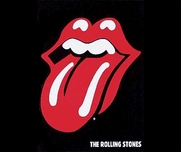
This occurs when the retrieval process does not produce a complete response, but produces parts that must be obstructed into a whole. Memory is organized by sounds, letter, or meaning and when they are not processed together you get the "tip of the tongue" feeling. This shoes how forgetting may result from retrieval failure, rather than encoding or storage failure. click to see more about forgetting
